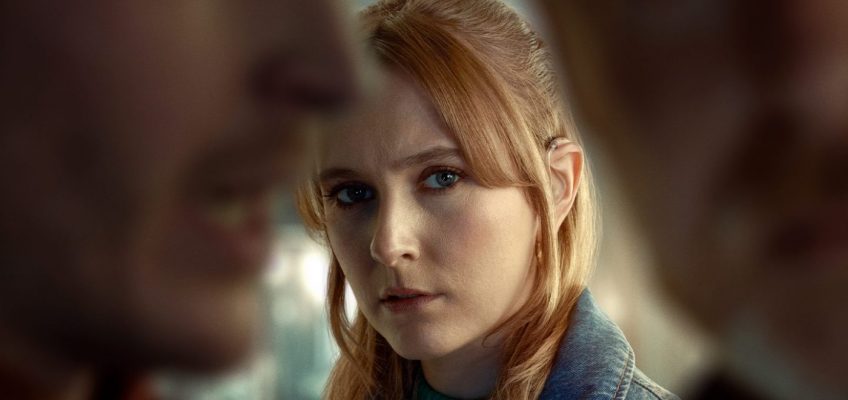In the BritBox crime thriller “Code of Silence,” a deaf woman working in the canteen at a police station in Canterbury, England, is recruited by detectives when they need someone to read lips on surveillance footage. That initial premise can only take the show so far — watching someone stare at a video and decipher what people are saying has limited storytelling possibilities — so “Code of Silence” finds ways to complicate the endeavor.
Alison Brooks doesn’t have much excitement in her life. She lives with her mother, who is lovely but a little needy, and she also has an ex-boyfriend who keeps showing up, trying to understand why their relationship ended. Both her mom and ex are deaf, and there’s an important intimacy that comes through in their interactions that she doesn’t have with hearing people. But she’s also just generally bored, and being looped into an investigation is a welcome change of pace.
The police are watching a small group of criminals who meet in outdoor locations that can’t be easily bugged. Video is possible with hidden cameras, but the department’s professional forensic lip-readers are busy working other cases, hence the need for Alison’s skills. As played by Rose Ayling-Ellis, Alison is an intriguing mix of naivete and risk-taking, with a side order of sex appeal. Most people underestimate her because she’s deaf. She’s too self-confident for that, but also worn down by the struggle of her working-class reality, and the exciting details of the case — turns out, they’re planning a jewel heist — prove too thrilling for her to ignore.
From left: Charlotte Ritchie as detective Ashleigh Francis and Rose Ayling-Ellis as Alison Brooks in “Code of Silence.” (Samuel Dore/BritBox)
Initially, the detectives try to limit just how much Alison knows for her own protection. But when she’s alone, she finds the group’s computer hacker, a guy named Liam Barlow (Kieron Moore), on social media. With just enough information to pique her curiosity, she gets a bartending job at the pub he frequents. He’s nice enough, in a rough and tumble way, and he takes a liking to her. He’s also charming, which complicates everything. Suddenly, Alison finds herself functioning as an undercover informant for the police.
For the first time in her life, people are taking her seriously. Maybe that’s why she’s a true believer in the police in ways that seem naive. It makes sense that law enforcement would care about the heist, but the show doesn’t explore why we, as viewers, should agree that there’s a major injustice afoot if an obnoxious rich person might be robbed of what is just one more expensive bobble in their collection.
Like “Patience” on PBS, this is a British cop show that features a disabled person whose skills become an unexpected asset to police work. And to “Code of Silence’s” credit, it’s told from the point of view of Alison, rather than the police. Disabled actors playing disabled characters should be more commonplace generally on television, but I appreciate that, in these two instances, they are being incorporated into a genre that has otherwise never made much room for them.
And the show (from creator Catherine Moulton, who is partially deaf herself) has an intriguing way of illustrating Alison’s experience lip-reading. Early on, as she’s busing tables in the canteen, she looks over and sees two people deep in conversation. “I’m o in razee here,” the subtitles read. Then the words adjust as Alison puts together what’s being said: “I’m going crazy here.” The man continues: “ewe se ewe leaf im,” and a moment later the words on screen become “You said you would leave him.” This format continues throughout the series, and it’s an effective way of conveying some of the guesswork involved. She explains that the letters B and P and M all look the same when reading lips, which is why she’s initially unsure if Liam’s last name is Barlow or Marlowe. But also: “It’s not just about seeing words.” You also need context. ”It’s who’s talking and what you know of them.”
The detectives are a mix of annoyed and concerned as Alison keeps putting her neck on the line, courting danger. What is she getting herself into? “I know what I’m doing,” she says firmly. She does not know what she’s doing. But she’s brazen, and that gets her further than anyone anticipates.
“Code of Silence” — 3 stars (out of 4)
Where to watch: BritBox
Nina Metz is a Tribune critic.




